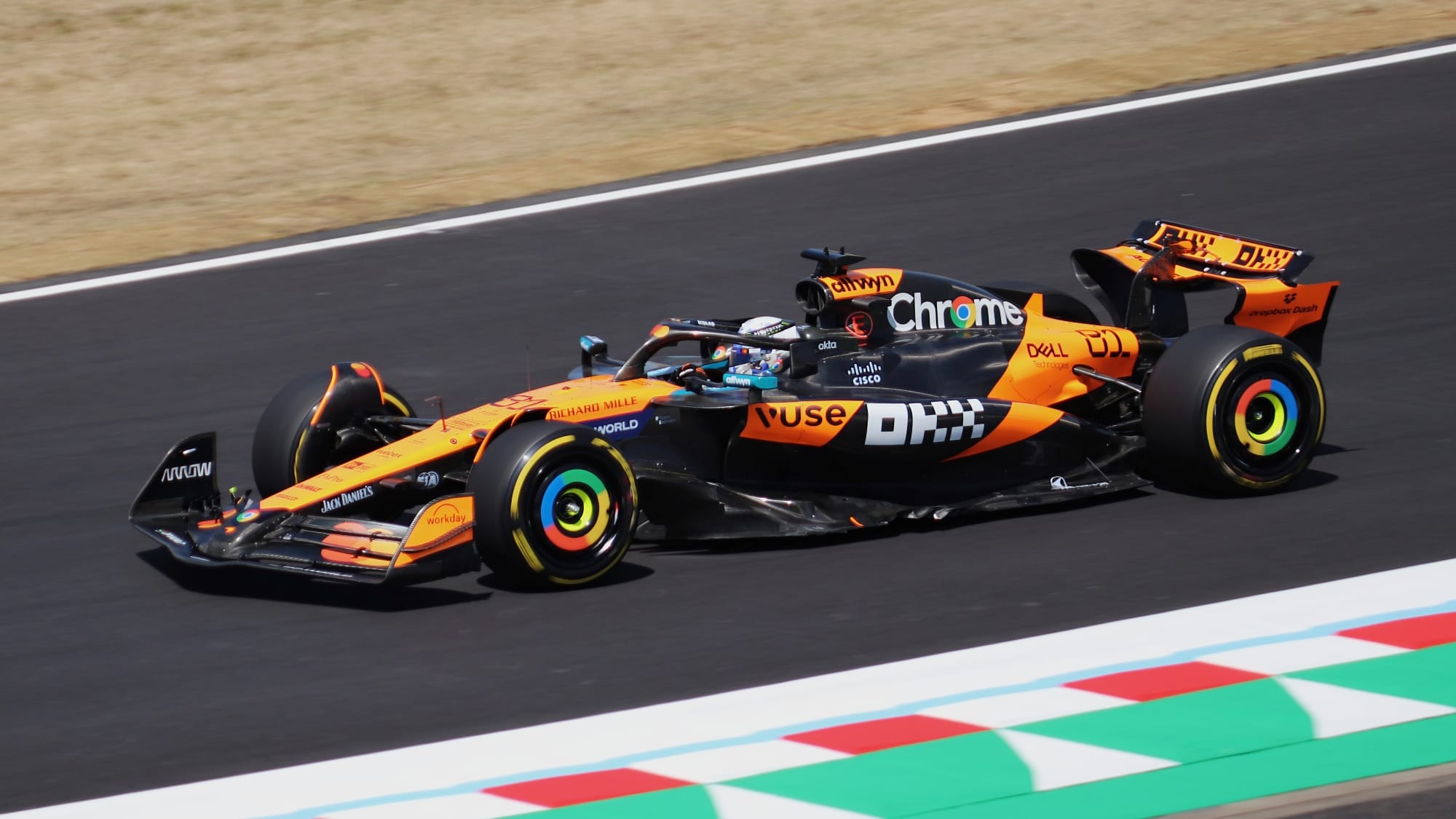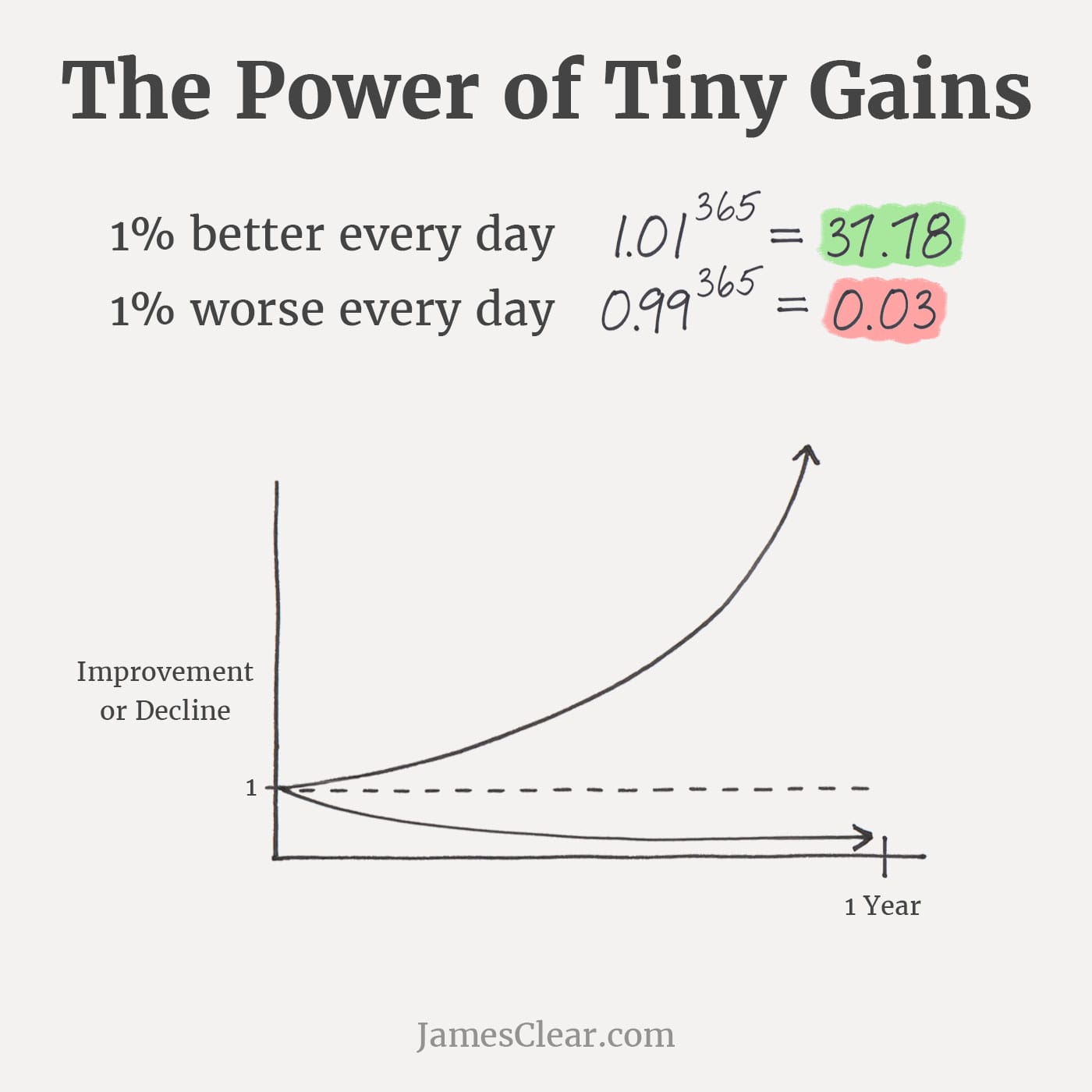The Power Of Making Micro-Adjustments
From fast paced decision-making to navigating plans long term, making multiple micro-adjustments is a powerful and effective strategy…

From fast paced decision-making to navigating plans long term, making multiple micro-adjustments is a powerful and effective strategy…
When you’re facing a great challenge or a large undertaking, it can become easy to feel overwhelmed, to get stuck, and even to abandon the task altogether.
According to behavioural scientist Dr. Michelle Rozen, only 6% of the 1,000 people that she surveyed actually followed through on their New Year’s resolutions. Most dropped the ball within two months.
Instead of attempting to make a huge change all at once, I’ve found that it can be better to make many small adjustments – little by little.
Multiple micro-adjustments or micro-corrections that, together, result in a huge change.
And I’ve found that making such incremental, compounding adjustments does wonders both when working towards short term targets and long term goals.
Let’s look at some real world examples:
The Fastest Car Around The Track
In Formula One racing, speed and control are paramount.
The F1 cars are some of the most advanced machines on the planet, and with their enormous power, tire grip, and downforce, they’re able to achieve incredible speeds, both in a straight line and around corners.

McLaren’s 2025 F1 race car.
These machines are ferocious beasts, and only twenty of the best drivers in the world (ten two-man teams) get to race them in the Formula One World Championship.
In most races, and especially on narrow circuits like in the Monaco Grand Prix where it’s difficult to overtake, gaining pole position (starting in first place at the beginning of the race) is highly advantageous.
To get pole position, however, you have to be the fastest car around the track in qualifying. (*There are also other factors influencing who gets pole). Which means, a driver has to squeeze every ounce of power and grip out of their car in order to get the quickest lap time.
To do that, the drivers make continuous, minute steering and throttle adjustments – maintaining the car on the absolute limit of tire grip; compensating for changing track conditions; and controlling oversteer or understeer – as they fly around the track at neckbreak speeds.
This ability to consistently operate on the ‘edge of disaster’ – at the very limit of both the driver’s and the vehicle’s capabilities – is a key factor that separates the professional drivers from the amateurs.
Pay for example close attention to the steering wheel in the hands of Lando Norris as he sets the lap record in Monaco:
(Watch on YouTube – Formula One Management doesn't allow video embedding).
It's almost never completely still: Norris is constantly making micro-adjustments to get the most performance out of his car.
Here is a another, slow-motion example from go-karting which shows the same principle:

Even though the overall motion/turning is smooth, there is a lot more going on when we take a closer look.
– I.e. smooth doesn’t always look smooth at a zoomed in or slowed down level. There are many small adjustments along the overall smooth path.
And while each small change doesn’t necessarily have a massive impact, together, the aggregate of all of the small changes is what makes the difference.
There is a compounding effect:
1% Better At Every Tiny Thing
In the book Atomic Habits, James Clear wrote about the monumental turnaround of British professional cycling that began in the early 2000’s.
After nearly a century of mediocre results for British riders at both the Olympic Games and the Tour de France, the governing body for professional cycling in Great Britain, British Cycling, wanted to change the poor trajectory that they were on. And so they hired Dave Brailsford as the new performance director.
Brailsford had a relentless commitment to a strategy he called ‘the aggregation of marginal gains’, which is the philosophy of searching for a tiny margin of improvement in everything you do.
The basic principle is that if you break down everything you can think of that goes into riding a bike, and then improve each thing by 1 percent, then you will achieve a significant performance increase in total.
So the team began making small adjustments in every area. For example:
- They redesigned the bike seats for better comfort.
- They rubbed alcohol on the tires for better grip.
- Riders wore electrically heated overshorts to maintain ideal muscle temperature.
- Riders wore biofeedback sensors so that the team could monitor how each athlete responded to a particular workout.
- The team tested different fabrics in wind tunnels to make the riders more aerodynamic.
- They tested different types of massage gels to find the one providing the fastest muscle recovery.
- They hired a surgeon to teach each rider the best way to wash their hands in order to reduce the chances of catching a cold.
- They found the type of pillow and mattress that gave each rider the best night’s sleep.
- They painted the inside of the team truck white to better spot dirt and dust that could degrade the performance of the finely tuned bikes.
Together with hundreds of other small changes that they made, these (by themselves) little adjustments led to massive performance gains.
And, only five years later, the British cycling team dominated at the 2008 Olympic Games in Beijing, winning over 60 percent of the gold medals available in the road and track cycling events.
This marked the beginning of a period of complete domination for Great Britain that would last until the 2020 Summer Olympics. The British team claimed 21 of the 30 gold medals awarded in the velodrome over the next three Games – 70% of all gold medals on offer.
Just one of the small 1% adjustments individually wouldn’t have gotten them to that point. It might not even have been noticeable. Instead, it was the aggregate of the many tiny advantages they gained which led the team to victory after victory.

The power of tiny gains. The gap between people who make 1% better and 1% worse choices widens over time.
Stacking up small victories over and over will eventually lead to bigger and bigger accomplishments.
Even just a few small advantages can have a large and lasting impact:
Small Advantages Lead To Big Wins
Scientists have analysed over half a million trees in the Amazon rainforest, and estimate that there are around 16,000 tree species there in total.
Despite this great number of different species which create a remarkable diversity, just 227 hyperdominant species – or 1.4% of the total – account for half of all trees in the rainforest.
Part of that dominance could be caused by a potential widespread human cultivation before the 16th century, but another compelling hypothesis is pointing to competitive superiority.
Let’s look at what happens organically when species of trees compete in the wild:
When two different sprouts grow next to each other, they will have to compete for sunlight, soil, and nutrients each and every day. If one of the sprouts can grow just a little bit faster than the other, then it’s able to stretch taller, catch more sunlight, and soak up more rain.
The next day, this additional energy allows the sprout to grow even more. The same pattern continues, and as the two sprouts grow into saplings, the stronger sapling starts crowding the other one out. And, by taking the lion’s share of resources, it grows into a stronger tree as it matures.
From this advantageous position, the winning tree has a better ability to spread seeds and reproduce, which gives the species an even bigger footprint in the next generation.
This process gets repeated over and over until the trees that are slightly better than the competition dominate the forest.
Scientists refer to this effect as ‘accumulative advantage’. What starts as a small advantage gets bigger over time. One tree only needs a slight edge in the beginning to crowd out the competition and take over most of the forest.

Euterpe precatoria, a hyperdominant palm tree species in the Amazon rainforest.
Some initial advantages in life may be purely luck-based, such as the time of year that you were born which may have an impact on your sporting success.
However, like with the British cycling team, many advantages can be manufactured by making small adjustments.
You can create advantages for yourself. Not necessarily one big one, but definitely several small ones which when combined will have a large effect.
The Bottom Line
It’s too easy to overestimate the importance of a single defining moment, and underestimate the value of making small improvements on a daily basis.
If you’re feeling stuck or overwhelmed when facing a large undertaking, start by improving one small thing. What’s the smallest challenge that pushes you slightly outside your comfort zone? That could be your launchpad.
Make a 1% change for the better in just one area.
Then, another. You won’t notice a big difference at first, but keep adding up the 1% changes and, before you know it – just like Lando Norris, the British cycling team, and the Euterpe precatoria did – you’ll be winning big.
I hope you found this article useful. For more productivity tips & tricks, see Productivity.




